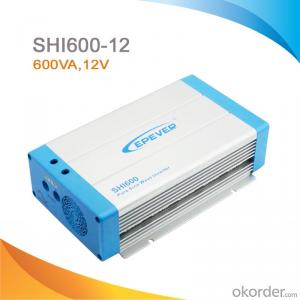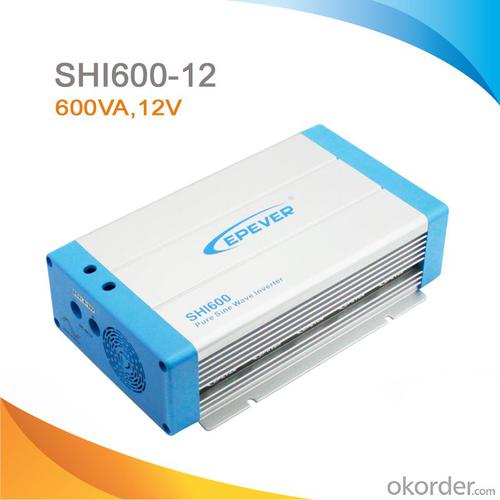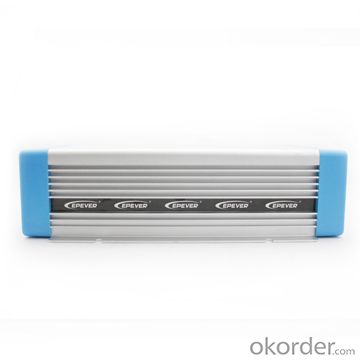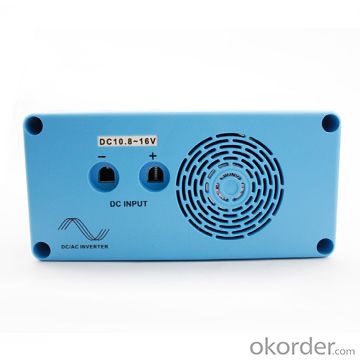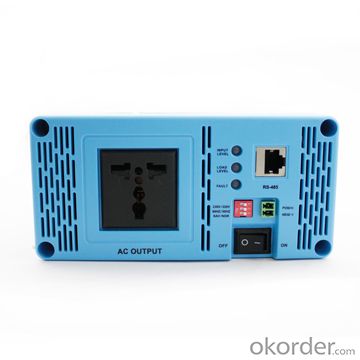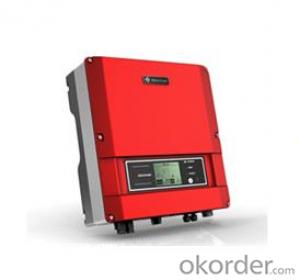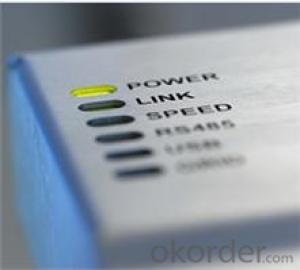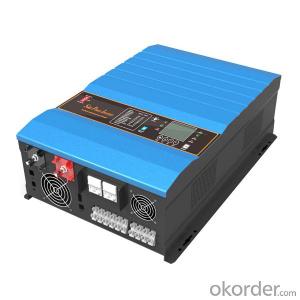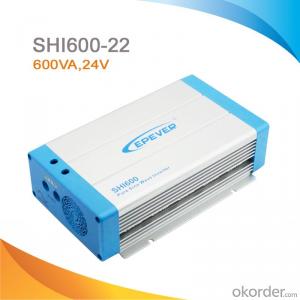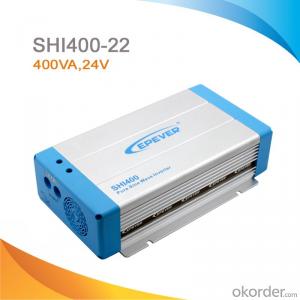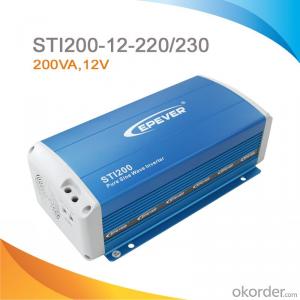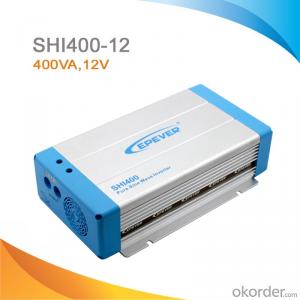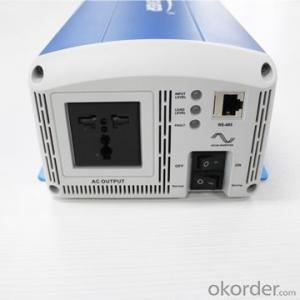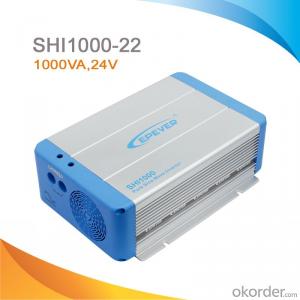20KW Solar Inverter - High Efficiency Off-Grid Pure Sine Wave PV Inverter 600W, DC 12V-AC 220V/230V, SHI600-12
- Loading Port:
- China Main Port
- Payment Terms:
- TT or LC
- Min Order Qty:
- -
- Supply Capability:
- -
OKorder Service Pledge
OKorder Financial Service
You Might Also Like
Description
SHI series is a pure sine wave inverter which can convert 12/24/48Vdc to 220/230Vac 50/60Hz based on full digital and intelligent design. It features high reliability, high efficiency, concise outline, small volume, easy installation and operation. The inverter can be applied in many fields, such as household appliances, electric tools and industrial devices etc, especially for solar photovoltaic power system.
Features:
·Input & output fully isolation
·Adoption of advanced SPWM technology, pure sine wave output
·Dynamic current loop control technology to ensure inverter reliable operation
·Wide DC input voltage range
·The output voltage and frequency can be switched
·Low output harmonic distortion(THD≤3%)
·LED indicators for input voltage range, load power range, normal output & failure state
·Optional energy saving mode
·Wide working temperature range (industrial level)
·Continuous operation at full power
Protections:
·Output short circuit protection
·Overload protection
·Input low voltage protection
·Input over voltage protection
·Overheating protection
·Inverter abnormal protection
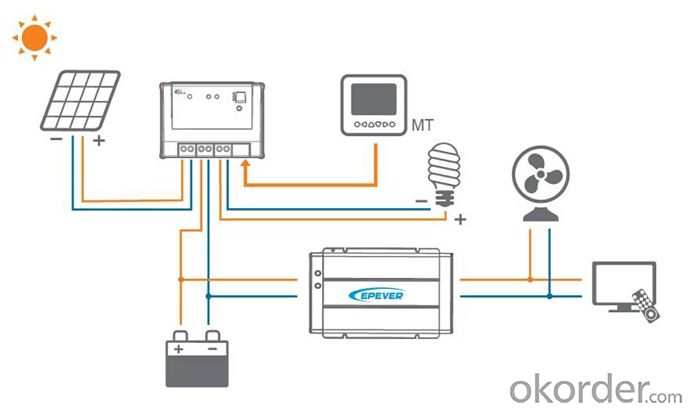
Specification:
Types | SHI600-12 | SHI600-22 |
Nominal Battery Voltage | 12V | 24V |
Input Voltage Range | 10.8~16Vdc | 21.6~32Vdc |
No Load Current | ≤0.7A | ≤0.45A |
Output Wave | Pure Sine Wave | |
Output Voltage | 220Vac±3% / 230Vac±10% | |
Continuous Power | 600W | |
Power 10 sec | 900W | |
Power 1.5 sec | 1200W | |
Surge Power | 1350W | |
Frequency | 50/60Hz±0.2% | |
Distortion THD | ≤ 3% (resistive load) | |
Efficiency at Rated Power | ≥91% | ≥92% |
Max. Efficiency | ≥93% | ≥94% |
Terminal | 25mm2 | |
Dimensions | 295×186×82mm | |
Installation | 150×178mm | |
Hole Size | Φ6mm | |
Net Weight | 2.3kg | |
Working Temperature | -20℃~ +50℃ | |
Storage Temperature | -35℃~ +70℃ | |
Humidity | < 95% (N.C.) | |
Altitude | < 5000m(Derating to operate according to IEC62040 at a height exceeding 1000m) | |
Insulation Resistance | Between DC input terminals and metal case: ≥550MΩ; Between AC output terminals and metal case: ≥550MΩ. | |
Dielectric Strength | Between DC input terminals and metal case: Test voltage AC1500V, 1 minute Between AC output terminals and metal case: Test voltage AC1500V, 1 minute | |
- Q: Can a solar inverter be used with different types of backup power sources?
- Yes, a solar inverter can be used with different types of backup power sources such as batteries, generators, or the utility grid. The inverter's role is to convert the DC power generated by solar panels into AC power that can be used by household appliances or fed back into the grid. It can seamlessly switch between different power sources, ensuring uninterrupted power supply and maximizing the utilization of renewable energy.
- Q: Can a solar inverter be used in conjunction with a smart home system?
- Yes, a solar inverter can be used in conjunction with a smart home system. The smart home system can integrate with the solar inverter to monitor and control the energy production, consumption, and storage. This allows for better optimization of energy usage, remote monitoring, and automated control of various devices and appliances within the smart home.
- Q: What happens to excess solar energy generated by the inverter?
- Excess solar energy generated by the inverter can be stored in batteries for later use or exported to the power grid, depending on the setup.
- Q: Can a solar inverter be used in a solar-powered irrigation system?
- Yes, a solar inverter can be used in a solar-powered irrigation system. A solar inverter is responsible for converting the direct current (DC) generated by solar panels into alternating current (AC) that can be used to power various appliances and systems. In the case of a solar-powered irrigation system, the AC power produced by the solar inverter can be used to operate pumps, valves, and other components necessary for irrigation.
- Q: What is the maximum efficiency at partial load for a solar inverter?
- The maximum efficiency at partial load for a solar inverter refers to the highest level of efficiency that can be achieved when the inverter is operating at less than its full capacity. This efficiency is typically lower than the maximum efficiency at full load, as the inverter may not be able to convert the same amount of energy with the same level of efficiency when it is not running at its maximum capacity.
- Q: What is the role of a solar inverter in a solar panel system?
- The role of a solar inverter in a solar panel system is to convert the direct current (DC) electricity generated by the solar panels into alternating current (AC) electricity that can be used to power household appliances and be fed back into the electrical grid. It also ensures that the electricity produced by the solar panels is of the correct voltage and frequency for safe and efficient use in homes and businesses.
- Q: How does a solar inverter handle voltage unbalance?
- A solar inverter handles voltage unbalance by continuously monitoring the grid voltage levels and adjusting its output accordingly. If it detects any voltage imbalance, it dynamically regulates the output voltage to balance the system. This ensures that the inverter operates within the acceptable voltage limits, prevents damage to the connected devices, and maintains efficient energy conversion.
- Q: How does a solar inverter handle high temperatures?
- A solar inverter handles high temperatures by incorporating advanced thermal management systems such as heat sinks and fans to dissipate heat efficiently. This helps to protect the inverter's sensitive components and maintain optimal operating conditions, preventing any potential damage or performance degradation caused by excessive heat.
- Q: What is the maximum input voltage that a solar inverter can handle?
- The maximum input voltage that a solar inverter can handle varies depending on the specific model and manufacturer. However, in general, most solar inverters can handle input voltages in the range of 600 to 1000 volts DC.
- Q: Are there any government incentives available for solar inverters?
- Yes, there are government incentives available for solar inverters. These incentives vary by country and region, but often include tax credits, grants, and rebates to encourage the adoption of solar energy. It is recommended to check with local authorities or consult a solar energy professional to determine the specific incentives available in a particular area.
Send your message to us
20KW Solar Inverter - High Efficiency Off-Grid Pure Sine Wave PV Inverter 600W, DC 12V-AC 220V/230V, SHI600-12
- Loading Port:
- China Main Port
- Payment Terms:
- TT or LC
- Min Order Qty:
- -
- Supply Capability:
- -
OKorder Service Pledge
OKorder Financial Service
Similar products
Hot products
Hot Searches
Related keywords
